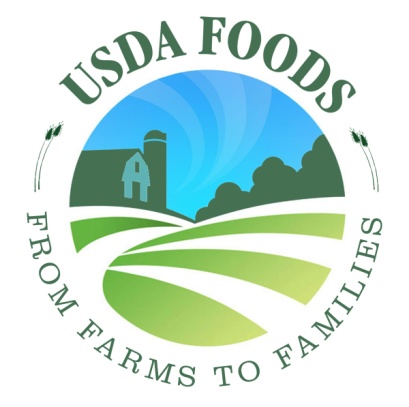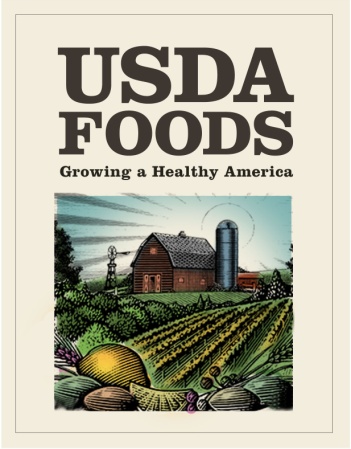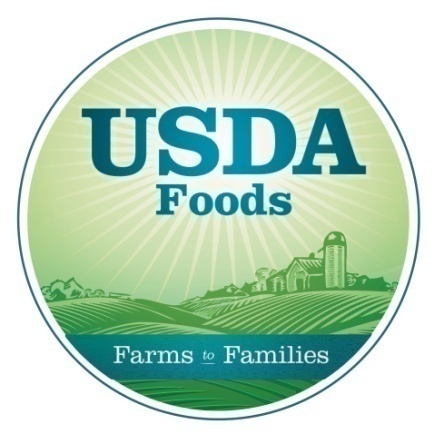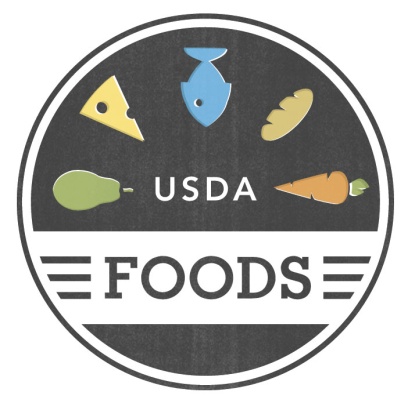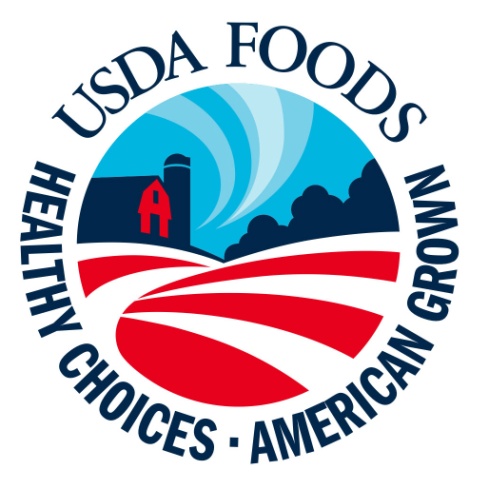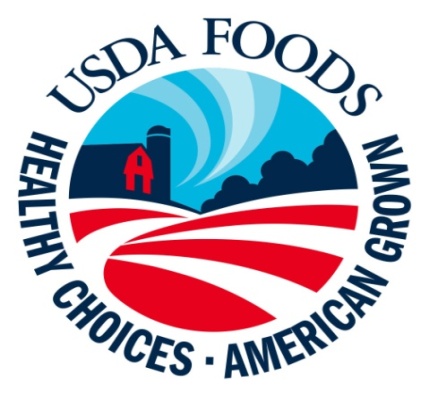Consumer Research for Nutrition Education and Promotion Activities
Generic Clearance to Conduct Formative Research
Parents_Guides_USDA Food Program
Consumer Research for Nutrition Education and Promotion Activities
OMB: 0584-0524
OMB Control # 0584-0524
Expiration Date: xx/xxxx
ATTACHMENT M – FOCUS GROUP DISCUSSION GUIDE FOR PARENTS
FOCUS GROUP OBJECTIVES
OBTAIN INFORMATION ABOUT PARTICIPANTS’ INFORMATION SOURCES AND MEDIA HABITS
ASSESS PARTICIPANTS’ OPINIONS OF SCHOOL LUNCHES IN GENERAL
OBTAIN FEEDBACK ABOUT CURRENT AND PROPOSED PROGRAM NAMES
ASSESS AWARENESS OF AND ATTITUDES TOWARD USDA COMMODITIES
ASSESS AWARENESS OF AND ATTITUDES TOWARD THE NATIONAL SCHOOL LUNCH PROGRAM
OBTAIN REACTIONS TO MESSAGE PLATFORMS AND TAGLINES
OBTAIN REACTIONS TO PROPOSED PROGRAM LOGOS
OBTAIN REACTIONS TO INFORMATION VIDEO CLIP
DETERMINE EFFECTIVE COMMUNICATION VEHICLES FOR DISSEMINATING INFORMATION ABOUT USDA COMMODITIES
NOTE: THIS IS THE FH/GMMB DISCUSSION LEADER’S GUIDE. IT WILL GUIDE THE LEADER THROUGH THE DISCUSSION, BUT WILL NOT BE READ VERBATIM TO PARTICIPANTS. PLEASE NOTE THAT THE LEADER WILL READ OUT LOUD ONLY THOSE WORDS OR SENTENCES THAT APPEAR IN regular type face.
Introduction (10 minutes)
Moderator Introduction
Purpose: To share thoughts and opinions about a number of issues surrounding government nutrition assistance programs administered by the U.S. Department of Agriculture or USDA.
Audio-record the discussion
Group Rules
Please speak one at a time; don’t interrupt. You don’t have to raise your hand.
Speak up/speak loudly.
We want to hear your opinions and experiences; we want your honest opinions. You don’t have to agree with others. There are no right or wrong answers, just different points of view.
Turn off cell phones.
Your name will never be associated with what you say; it will be kept confidential.
READ OMB BURDEN STATEMENT: According to the Paperwork Reduction Act of 1995, no persons are required to respond to a collection of information unless it displays a valid OMB control number. The valid OMB control number for this information collection is 0584-0524. The time required to complete this information collection is estimated to average 2 hours and 20 minutes, including the time for reviewing instructions, searching existing data sources, gathering and maintaining the data needed, and completing and reviewing the collection of information.
Send comments regarding this burden estimate or any other aspect of this collection of information, including suggestions for reducing this burden, to: U.S. Department of Agriculture, Food and Nutrition Service, Office of Research and Analysis, 3101 Park Center Drive, Room 1014, Alexandria, VA 22302 (0584-0524). Do not return the completed form to this address.
The research records that will be collected and used for this study may include an opinion survey, written notes and an audiotape made during your participation in the focus group discussion. However, your comments and survey responses will be shared only in the aggregate with those from other participants. Aggregated information or results from this study may be presented in meetings or in internal reports to the USDA, Food and Nutrition Service. Your name and any information that can be traced back to you will not be included in any reports or meetings to the USDA.
The discussion will end in two hours.
I need to make sure I have everyone’s consent to participate in this discussion and that you agree to and understand the terms of the consent form you reviewed and signed in the lobby. Does everyone consent to participate in this discussion? If at any point you decide you do not want to participate, please know that you are free to leave the discussion at any point.
Participant Introductions
First name
Number of years you’ve lived in NAME OF FOCUS GROUP MARKET
Tell me about your household – who lives at home with you?
Media Habits/Health and Nutrition Information Sources (5 minutes)
HANDOUT A (ATTACHED) – PARTICIPANTS WILL FILL OUT IN THE LOBBY PRIOR TO THE START OF THE GROUP. USE HANDOUT A TO GUIDE DISCUSSION.
How do you get health and nutrition information? PROBE: Internet – which sites? Blogs? Social networks? Magazines? Journals? Radio? Friends and family? Physicians?
What type of information are you normally looking for? PROBE: Nutrition tips and/or facts? Recipe or meal ideas? What else?
In your opinion, when it comes to health and nutrition information, who or what do you consider to be the most trustworthy sources? PROBE: Blogs? Web sites – which ones? Government agencies? Friends and family? Physicians? Nutritionists? Schools? TV? Radio? Newspapers or magazines?
How does your child’s school provide you with information about upcoming events, announcements and breakfast/lunch menus?
Attitudes and Opinions of School Lunches in General (10 minutes)
I want your opinions as a parent/guardian, on the types of foods available in schools.
Can a few people tell me about the types of foods provided to your child(ren) in the school cafeteria at lunch? PROBE: Is this based on what you have heard from your child(ren), or what you remember from your childhood? How have school lunches changed, if at all, since you were in school? How do you know this?
What words would you use to describe the foods provided in cafeterias? Why?
To what extent do you think your child(ren) is provided healthy and nutritious foods (e.g., salads, fruits, etc.) in the cafeteria? Why do you think this?
What are your opinions or attitudes about the foods served at schools? PROBE: Are they positive or negative? Is the food healthy or unhealthy? Is there variety? Why do you think these attitudes exist? Do you think they are correct? PROBE ANY SPECIFIC MISPERCEPTION AS APPROPRIATE.
What do you hear from other parents/guardians about the food at schools?
What does your child think about the foods at schools? PROBE: What, if anything, have they told you?
Based on what you know about your child(ren)’s eating habits, tell me about the food choices they make when they’re at school. PROBE: Do you think your child(ren) and other students make healthy choices? How are you involved in your child(ren)’s food choices? What role does the school play?
For what reasons, if any, does your child(ren) choose to eat school meals – breakfast or lunch – instead of bringing food from home? PROBE: Is it less expensive? Easier or more convenient? Healthier? Better quality? What other reasons?
What, if anything, do you think should be done, to improve or make school lunches better?
Awareness of and Attitudes toward USDA Commodities (10 minutes)
Still thinking about the meals provided by your child(ren)’s school, what role, if any, does the government play in providing food to schools? PROBE: What types of food do they provide? Is there a benefit to receiving government food? How do you know this?
Before today, has anyone heard of the USDA Commodities Program? Please raise your hand. MODERATOR WILL RECORD HAND COUNT.
IF AWARE, ASK: What do you know about USDA Commodities and how the program interacts with your child(ren)’s school? PROBE: What types of services does this program provide? Are you familiar with any other nutrition assistance programs that fall under the USDA Commodities Program? I f so, which ones?
Since most of you are not aware of the USDA Commodities Program, I want to provide you with a brief background and the role it serves in providing nutritious foods to schools and families.
PROVIDE BRIEF, HIGH-LEVEL, DESCRIPTION OF THE PROGRAM.
Based on the description I just read, what are your reactions to the USDA Commodities program? PROBE: Does this sound like a positive or negative program? Why?
What do you think are benefits or strengths of USDA Commodities? How do you think your child(ren) and their schools benefit from USDA Commodities? Why do you think this?
What do you think are weaknesses or drawbacks of USDA Commodities? Why?
IF NOT ALREADY MENTIONED, PROBE ON OPINIONS OF THE FOODS PROVIDED: How would you describe the foods provided by USDA Commodities to schools? PROBE: Nutritious? Variety? Low salt? Low-sugar? Low fat?
Based on the description I shared with you, and your own personal knowledge, what contributions do you think USDA Commodities make to the National School Lunch Program? How do you think these two programs work together? PROBE: Impact on costs? Impact on types of foods?
Reactions to Proposed Program Names (10 to 15 minutes).
We are going to spend the rest of our time discussing the USDA Commodities Program. This program is considering changing its name. Now that you know the purpose of USDA Commodities, I want to get your opinions on some possible new names.
On the following handout, you will see several possible program names, along with the current name – USDA Commodities. Please take a moment and read each one and answer the related questions. After everyone has answered the questions, we’ll discuss. HANDOUT B (ATTACHED).
Let’s start by discussing the current name – USDA Commodities. Based on the name alone and disregarding what we’ve already discussed, what type of services would you think this program provides? Why do you think this?
What, if anything, do you like about the USDA Commodities Program? What does this name mean or communicate to you? What comes to mind? Why?
What, if anything, do you dislike about it? Why?
What do you think about USDA Commodities changing its name? PROBE: Is this a good or bad idea? Why?
Now, let’s talk about the other names. Looking at your responses, it looks like most people preferred PROGRAM NAME. Let’s start with this one.
What did you especially like about PROGRAM NAME? PROBE: Why does this appeal to you? Why did it catch your attention?
What did you dislike, if anything, about PROGRAM NAME? Why?
Based on this name, what type of services would you expect this program to provide? Why do you think this?
REPEAT QUESTIONS F, G, AND H FOR ALL NAMES.
Are there any other names that you think would be better?
Awareness of and Attitudes toward the National School Lunch Program (10 minutes)
Before we continue, I want to get your thoughts on the importance of some topics about the food and meals provided by schools. Please rank the following topics in order of importance to you, where “1” equals the most important topic and “6” equals the least important topic when it comes to the foods provided by schools (REFER TO HANDOUT C,ATTACHED). After everyone has ranked them, we’ll discuss.
Ok, it looks like most of you ranked TOPIC as the most important. Why is this topic important?
Other TOPICS that ranked high include: TOPIC and TOPIC. Why are these important?
Tell me about the topics you ranked as 5 or 6. Why are these less important?
Are there any topics missing from this list? What are they and why are they important?
I’d like to change topics for a moment and talk about the National School Lunch Program. Can anyone tell me about it? What’s the purpose of this program?
IF NECESSARY, PROVIDE BRIEF, HIGH-LEVEL, DESCRIPTION OF THE PROGRAM.
To what extent were you aware of the National School Lunch Program prior to today?
In your opinion, what are the strengths of the National School Lunch Program? PROBE: What do you think are benefits of child(ren) participating in the National School Lunch Program? P ROBE: Convenient? Save money? More nutritious foods?
And what are the weaknesses of the National School Lunch Program, if any? Why?
Why do you think your child(ren) or other students choose to participate in the National School Lunch Program? PROBE: What are the benefits? PROBE: What role do you play as a parent/ guardian in this decision?
Why do you think your child(ren) or other students choose not to participate in the National School Lunch Program? PROBE: What role do you play in this decision? Other food options? Knowledge? Misperceptions about the foods provided?
Tell me about the types of food and meals available to your child(ren)in the school cafeteria. PROBE: Purchasing whole meals or a la carte items? Why do you think students do this?
How does your child(ren) participate in the school lunch program, if at all? PROBE: Do they typically get an entire meal or a la carte items? Why? How do you know this?
What type of controls, if any, do parents/guardians have over the types of food your child(ren) chooses in the school cafeteria? PROBE: Meal card controls?
Reactions to Message Platforms and Taglines (15 to 20 minutes)
USDA Commodities is trying to find ways to get information to parents/guardians about the benefits of the program. Along with a possible new name, USDA Commodities is developing a number of new creative ideas and we’d like your feedback. I’d like to start by sharing some possible taglines with you. A tagline is a short phrase that describes the tone and purpose of a brand or program. The tagline will be used with the program name and logo. For example, Nike’s tagline is, “Just Do It.” McDonald’s is, “I’m Loving It”.
On this handout, you will see a number of possible taglines for USDA Commodities. Please rate how likely each tagline is to catch your attention and then choose the tagline you like best.
HANDOUT D (ATTACHED).
Now that everyone has had a chance to individually think about each tagline, let’s talk about them. It looks like many of you like TAGLINE the most.
What did you especially like about this TAGLINE? Why did it catch your attention? PROBE: What does it mean to you?
What, if anything, did people dislike about this TAGLINE? Why?
REPEAT QUESTIONS C AND D FOR EVERY TAGLINE.
Next, I want to share some statements about USDA Commodities. REFER TO HANDOUT E (ATTACHED). After you read each one, please rate how each one motivates you to encourage your child(ren) to participate in the school lunch program, and then rank them according to how well they describe the purpose of the program. As you read each statement, please underline or circle any words or phrases that are especially meaningful to you.
It looks like most people liked MESSAGE as the one that best describes the purpose of USDA Commodities. Why do you think this?
What other statements do a good job of describing the purpose of USDA Commodities? Why?
Which ones do you think are most motivating? Why?
Are there any statements that do a bad job of describing the purpose of USDA Commodities? Why?
In general, are there any key words or phrases that are especially meaningful to you or catch your attention?
Now that you have heard some accurate statements about USDA Commodities, have your opinions about the taglines changed? Why? PROBE: Does anyone have a new favorite tagline? Why did you change your mind?
Reactions to Logos (10 to 15 minutes)
Next, I want to share some possible logos for USDA Commodities. After you have viewed each one, please rate how well it describes the purpose of the USDA Commodities Program and choose the logo that does the best job of describing the purpose of the program. REFER TO HANDOUT F (ATTACHED).
Let’s talk about each logo. It looks like many people chose LOGO as the one that best describes the USDA Commodities program. Let’s talk about this one first.
What is the logo saying or what does the logo mean to you? PROBE: What message(s) does it provide, if any?
What do people particularly like about this logo? PROBE: Colors? Images? Font/Text size or style? What else? Why?
And what do people dislike about this logo? PROBE: Colors? Images? Font/Text size or style? What else? Why? Do you have suggestions for how to improve it or make it better?
REPEAT QUESTIONS C, D, AND E FOR EACH LOGO.
Now that we’ve discussed the logos and taglines, let’s talk about the combination we like best. Please select your favorite combination by drawing a line between one tagline and one logo. Each tagline and logo can only be used once. REFER TO HANDOUT G (ATTACHED).
It looks like everyone is finished and it looks like several people like the combination of TAGLINE and LOGO. What did people like about this?
Reactions to Video (5 to 10 minutes)
USDA Commodities is considering using a video to provide schools and parents/guardians with information about the healthy benefits that USDA Commodities have and the nutritious contribution they make to the National School Lunch Program. I want to share a few minutes of this video with you. While we do not have time to watch the entire video, I would like your reactions to the messages and images used in this video.
PLAY VIDEO.
What, if anything, did people like about this video? PROBE: What caught your attention? Why?
Based on what you saw, do you think this video will help parents/guardians understand USDA Commodities and the National School Lunch Program and improve their opinions of these programs? Why or why not?
What, if anything, did you dislike about this video? Why?
Do you have any thoughts or suggestions on the best way to share and use this video? PROBE: Post on a Web site? Show at PTA meetings? Any other ideas?
Preferred Communications Vehicles (5 to 10 minutes)
Thinking about everything we discussed this evening, what do you think is the best way for USDA or schools to share information about the program with parents/guardians, particularly mothers? Why?
What would motivate you to encourage your child(ren) to participate in the School Lunch Program?
And finally, what type of information would you be interested in receiving about USDA Commodities and the National School Lunch Program? Why?
Conclusion/Wrap-Up (2 minutes)
Does anyone have additional thoughts and/comments they would like to share?
Thank you for your time!
HANDOUT A – INFORMATION SOURCES
1. Which of the following information sources do you use on a regular basis to obtain news and information about health and nutrition? Choose all that apply.
1 |
Local radio news broadcasts |
2 |
National radio news broadcasts |
3 |
Local TV news broadcasts |
4 |
National TV news broadcasts |
5 |
Local newspapers |
6 |
National newspapers |
7 |
Magazines |
8 |
Internet search engines such as Google or Yahoo! |
9 |
Health and/or nutrition Web sites |
10 |
Government Web sites |
11 |
Internet news sites such as CNN.com |
12 |
Blogs and/or online discussion groups |
13 |
Professional journals |
14 |
Professional associations |
15 |
Colleagues, co-workers |
16 |
Friends, neighbors, family members |
2. Using a five-point-scale, where 5 equals “extremely trustworthy” and 1 equals “not at all trustworthy,” please rate how trustworthy you think each of the following information sources are in providing reliable health and/or nutrition information.
|
Extremely Trustworthy |
Very Trustworthy |
Somewhat Trustworthy |
Not Very Trustworthy |
Not At All Trustworthy |
Local radio news broadcasts |
5 |
4 |
3 |
2 |
1 |
National radio news broadcasts |
5 |
4 |
3 |
2 |
1 |
Local TV news broadcasts |
5 |
4 |
3 |
2 |
1 |
National TV news broadcasts |
5 |
4 |
3 |
2 |
1 |
Local newspapers |
5 |
4 |
3 |
2 |
1 |
National newspapers |
5 |
4 |
3 |
2 |
1 |
Magazines |
5 |
4 |
3 |
2 |
1 |
Internet search engines such as Google or Yahoo! |
5 |
4 |
3 |
2 |
1 |
Health and/or nutrition Web sites |
5 |
4 |
3 |
2 |
1 |
Government Web sites |
5 |
4 |
3 |
2 |
1 |
Internet news sites such as CNN.com |
5 |
4 |
3 |
2 |
1 |
Blogs and/or online discussion groups |
5 |
4 |
3 |
2 |
1 |
Professional journals |
5 |
4 |
3 |
2 |
1 |
Professional associations |
5 |
4 |
3 |
2 |
1 |
Colleagues. co-workers |
5 |
4 |
3 |
2 |
1 |
Friends, neighbors, family members |
5 |
4 |
3 |
2 |
1 |
HANDOUT B – Proposed Program Names
1. On a five-point scale, please tell us how much you like each of the following names for USDA Commodities:
PROGRAM NAME |
Like a lot “5” |
Like “4” |
Neither Like nor Dislike “3” |
Do Not Like “2” |
Do Not Like At All “1” |
Not Sure |
USDA Foods |
5 |
4 |
3 |
2 |
1 |
6 |
USDA Nutritious Choices |
5 |
4 |
3 |
2 |
1 |
6 |
USDA Healthy Choices |
5 |
4 |
3 |
2 |
1 |
6 |
USDA Wholesome Options |
5 |
4 |
3 |
2 |
1 |
6 |
USDA Nutritious Foods |
5 |
4 |
3 |
2 |
1 |
6 |
USDA Nutritious Options |
5 |
4 |
3 |
2 |
1 |
6 |
2. Which of the following names best describes a program that helps provide healthy foods? Select only one.
1 |
USDA Foods |
2 |
USDA Nutritious Choices |
3 |
USDA Healthy Choices |
4 |
USDA Wholesome Options |
5 |
USDA Nutritious Foods |
6 |
USDA Nutritious Options |
HANDOUT C – MESSAGE TOPICS
1. After reading through the list of topics below, please rank these topics in order of importance to you– where 1 equals the MOST important to you and 6 equals the LEAST important to you.
Rank |
Topic |
|
Food Safety and Standards |
|
Nutrition Benefits |
|
American Grown |
|
Healthy Choices |
|
Meals at a Good Value |
|
Foods that Taste Good |
HANDOUT D – TAGLINES
1. On a five-point scale, please tell us how much you like each of the following taglines for USDA Commodities. Please circle your response:
TAGLINE |
Like A Lot “5” |
Like “4” |
Neither Like Nor Dislike “3” |
Do Not Like “2” |
Do Not Like At All “1” |
Not Sure |
Healthy Choices. American Grown. |
5 |
4 |
3 |
2 |
1 |
6 |
Growing a Healthy America |
5 |
4 |
3 |
2 |
1 |
6 |
Growing America’s Future |
5 |
4 |
3 |
2 |
1 |
6 |
From Farms to Families |
5 |
4 |
3 |
2 |
1 |
6 |
Choices for a Healthy Life |
5 |
4 |
3 |
2 |
1 |
6 |
2. Please look at the five taglines that could be used for USDA Commodities. Please rank them from 1 to 5 -- where 1 represents the “highest or best” and 5 represents the “lowest”.
|
Healthy Choices. American Grown. |
|
Growing a Healthy America |
|
Growing America’s Future |
|
From Farms to Families |
|
Choices for a Healthy Life |
HANDOUT E – STATEMENTS
1. On a five-point scale, please tell us how much you like each of the following messages for USDA Commodities. Please circle your response:
STATEMENT |
Like A Lot “5” |
Like “4” |
Neither Like Nor Dislike “3” |
Do Not Like “2” |
Do Not Like At All “1” |
Not Sure |
When more Americans are able to eat right, our nation thrives. That’s why USDA purchases high-quality, American-grown foods for a variety of [INSERT PROGRAM NAME] programs, including the National School Lunch Program. USDA provides a wide variety of nutritious foods that are lower in sugar, salt, and fat. And you can feel confident knowing these foods are safe and support the Dietary Guidelines for Americans and MyPyramid. USDA goes to great lengths to ensure America’s future is a healthy one. |
5 |
4 |
3 |
2 |
1 |
6 |
The world’s best foods are grown on American farms. We believe everyone should have access to these quality food choices, because they are key to good health. That’s why USDA purchases a wide variety of nutritious foods that are lower in sugar, salt, and fat. And they meet USDA’s high food safety standards. Then we distribute these foods across the nation through [INSERT PROGRAM NAME] programs for adults, families, and children—including the National School Lunch Program. USDA helps connect people who grow good food and those who need it. |
5 |
4 |
3 |
2 |
1 |
6 |
Nutritious food choices are essential to a healthy life. That’s why USDA works with American farmers to purchase high-quality foods for the National School Lunch Program and other [INSERT PROGRAM NAME] programs. We offer a wide variety of nutritious foods that are low in salt, sugar, and fat which support the Dietary Guidelines for Americans and MyPyramid. When we help people eat right, we help them get the most out of life. |
5 |
4 |
3 |
2 |
1 |
6 |
2. Using a five-point scale, where 5 equals “extremely motivating” and 1 equals “not at all motivating,” please rate how much each statement about USDA Commodities motivates you to learn more about the program, and to share information about the program with other parents/guardians/school officials in your child(ren)'s school or school district.
STATEMENT |
Extremely Motivating |
Very Motivating |
Somewhat Motivating |
Not Very Motivating |
Not At All Motivating |
Not Sure |
When more Americans are able to eat right, our nation thrives. That’s why USDA purchases high-quality, American-grown foods for a variety of [INSERT PROGRAM NAME] programs, including the National School Lunch Program. USDA provides a wide variety of nutritious foods that are lower in sugar, salt, and fat. And you can feel confident knowing these foods are safe and support the Dietary Guidelines for Americans and MyPyramid. USDA goes to great lengths to ensure America’s future is a healthy one. |
5 |
4 |
3 |
2 |
1 |
6 |
The world’s best foods are grown on American farms. We believe everyone should have access to these quality food choices, because they are key to good health. That’s why USDA purchases a wide variety of nutritious foods that are lower in sugar, salt, and fat. And they meet USDA’s high food safety standards. Then we distribute these foods across the nation through [INSERT PROGRAM NAME] programs for adults, families, and children—including the National School Lunch Program. USDA helps connect people who grow good food and those who need it. |
5 |
4 |
3 |
2 |
1 |
6 |
Nutritious food choices are essential to a healthy life. That’s why USDA works with American farmers to purchase high-quality foods for the National School Lunch Program and other [INSERT PROGRAM NAME] programs. We offer a wide variety of nutritious foods that are low in salt, sugar, and fat which support the Dietary Guidelines for Americans and MyPyramid. When we help people eat right, we help them get the most out of life. |
5 |
4 |
3 |
2 |
1 |
6 |
3. Which statement do you think does the best job of describing/explaining the purpose of the USDA Commodities Program? Select only one.
1 |
When more Americans are able to eat right, our nation thrives. That’s why USDA purchases high-quality, American-grown foods for a variety of [INSERT PROGRAM NAME] programs, including the National School Lunch Program. USDA provides a wide variety of nutritious foods that are lower in sugar, salt, and fat. And you can feel confident knowing these foods are safe and support the Dietary Guidelines for Americans and MyPyramid. USDA goes to great lengths to ensure America’s future is a healthy one. |
2 |
The world’s best foods are grown on American farms. We believe everyone should have access to these quality food choices, because they are key to good health. That’s why USDA purchases a wide variety of nutritious foods that are lower in sugar, salt, and fat. And they meet USDA’s high food safety standards. Then we distribute these foods across the nation through [INSERT PROGRAM NAME] programs for adults, families, and children—including the National School Lunch Program. USDA helps connect people who grow good food and those who need it. |
3 |
Nutritious food choices are essential to a healthy life. That’s why USDA works with American farmers to purchase high-quality foods for the National School Lunch Program and other [INSERT PROGRAM NAME] programs. We offer a wide variety of nutritious foods that are low in salt, sugar, and fat which support the Dietary Guidelines for Americans and MyPyramid. When we help people eat right, we help them get the most out of life. |
HANDOUT F – LOGOS
1. On a five-point scale, please tell us how much you like each of the following logos for USDA Commodities.
LOGO |
Like A Lot “5” |
Like “4” |
Neither Like Nor Dislike “3” |
Do Not Like “2” |
Do Not Like At All “1” |
Not Sure |
Logo 1
|
5 |
4 |
3 |
2 |
1 |
6 |
Logo 2
|
5 |
4 |
3 |
2 |
1 |
6 |
Logo 3
|
5 |
4 |
3 |
2 |
1 |
6 |
Logo 4
|
5 |
4 |
3 |
2 |
1 |
6 |
Logo 5
|
5 |
4 |
3 |
2 |
1 |
6 |
2. Please look at the five logos that could be used for USDA Commodities. Please select the logo that you think will do the best job of describing/explaining the purpose of the program.
Logo 1
|
Logo 2
|
Logo 3
|
Logo 4
|
Logo 5
|
HANDOUT G – Tagline and Logo Combination
Select the tagline and logo combination that you like best by drawing a line from one tagline in the left-hand column to one logo that you think goes with it best in the right-hand column. Please select only one combination.
Column A |
Column B |
Healthy Choices. American Grown. |
Logo 1
|
Growing a Healthy America |
Logo 2
|
Growing America’s Future |
Logo 3
|
From Farms to Families |
Logo 4
|
Choices for a Healthy Life |
Logo 5
|
| File Type | application/msword |
| Author | Shaw, Jean |
| Last Modified By | rgreene |
| File Modified | 2010-03-04 |
| File Created | 2010-03-04 |
© 2026 OMB.report | Privacy Policy
